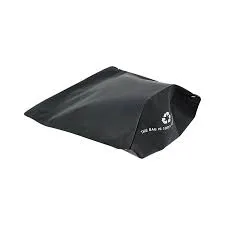- Afrikaans
- Albanian
- Amharic
- Arabic
- Armenian
- Azerbaijani
- Basque
- Belarusian
- Bengali
- Bosnian
- Bulgarian
- Catalan
- Cebuano
- chinese_simplified
- chinese_traditional
- Corsican
- Croatian
- Czech
- Danish
- Dutch
- English
- Esperanto
- Estonian
- Finnish
- French
- Frisian
- Galician
- Georgian
- German
- Greek
- Gujarati
- haitian_creole
- hausa
- hawaiian
- Hebrew
- Hindi
- Miao
- Hungarian
- Icelandic
- igbo
- Indonesian
- irish
- Italian
- Japanese
- Javanese
- Kannada
- kazakh
- Khmer
- Rwandese
- Korean
- Kurdish
- Kyrgyz
- Lao
- Latin
- Latvian
- Lithuanian
- Luxembourgish
- Macedonian
- Malgashi
- Malay
- Malayalam
- Maltese
- Maori
- Marathi
- Mongolian
- Myanmar
- Nepali
- Norwegian
- Norwegian
- Occitan
- Pashto
- Persian
- Polish
- Portuguese
- Punjabi
- Romanian
- Russian
- Samoan
- scottish-gaelic
- Serbian
- Sesotho
- Shona
- Sindhi
- Sinhala
- Slovak
- Slovenian
- Somali
- Spanish
- Sundanese
- Swahili
- Swedish
- Tagalog
- Tajik
- Tamil
- Tatar
- Telugu
- Thai
- Turkish
- Turkmen
- Ukrainian
- Urdu
- Uighur
- Uzbek
- Vietnamese
- Welsh
- Bantu
- Yiddish
- Yoruba
- Zulu
Understanding the Importance of Printing Trapping Techniques for Quality Graphics
Understanding Printing Trapping Enhancing Quality in Print Production
In the realm of print production, the term printing trapping may often surface, invoking curiosity among designers, printers, and print enthusiasts alike. Trapping refers to a technique used to ensure that colors in a printed piece overlap slightly, which helps to prevent unsightly gaps and misalignments between adjacent colors. This technique plays a pivotal role in producing high-quality printed materials, and understanding its principles can greatly enhance the final output.
At its core, trapping is necessary because of the inherent variations that can occur during the printing process. Despite the best efforts to align each color accurately, slight misregistrations can happen due to mechanical factors, ink spread, or paper movement. These discrepancies can result in thin white lines appearing between colors, severely affecting the visual quality of the print.
There are two fundamental types of trapping spread trapping and choke trapping. Spread trapping involves extending the edges of a lighter color to overlap a darker color, while choke trapping entails pulling back the edges of a darker color to avoid showing white space if the alignment is off. The choice of trapping method largely depends on the colors being used and their intended visual effects. For instance, spread trapping is common when working with lighter hues, while choke trapping is advisable for darker tones, ensuring a seamless visual transition between adjacent colors.
The amount of trapping applied can vary based on the type of printing process, the substrates being used, and the desired outcome. In processes like flexography or gravure, where ink tends to spread more, a greater degree of trapping might be necessary. Conversely, in digital printing where precision is enhanced, the trapping might be less pronounced. The critical aspect is to strike a balance; too much trapping can lead to muddy colors, while too little can result in visible gaps that compromise the design.
printing trapping

When designing for print, it’s essential for graphic designers to understand the implications of trapping on their artwork. While most design software, like Adobe Illustrator or Photoshop, offers tools to create trapping automatically, manual adjustments may be required to achieve the best results. Designers should be mindful of their color choices, as complementary colors are often suited for trapping techniques, allowing for a cohesive blend rather than stark contrasts.
Another integral component to consider is the type of paper being used. The characteristics of the paper, such as its texture and absorbency, can significantly influence how ink behaves. For instance, uncoated papers tend to absorb more ink, which can lead to greater spread, necessitating careful consideration of trapping amounts. On the other hand, coated papers often require less trapping due to the controlled ink application.
In practical application, successful trapping not only enhances the aesthetic quality of printed materials but also improves the overall durability of the print. Prints that incorporate effective trapping techniques are less prone to visual flaws and maintain their integrity over time. This is especially relevant in high-volume print jobs where consistent quality is crucial.
In conclusion, printing trapping is a fundamental technique in the world of print production, serving as a safeguard against common pitfalls resulting from misalignment. By embracing and mastering trapping techniques, designers and printers can elevate their work to new standards of quality. Whether through spread trapping, choke trapping, or a careful balance of both, the goal remains clear to produce beautiful, flawless prints that effectively convey the intended message. As technology advances and printing methods evolve, the principles of trapping will continue to be an essential part of the equation, ensuring that the art of print remains vibrant and visually engaging.













